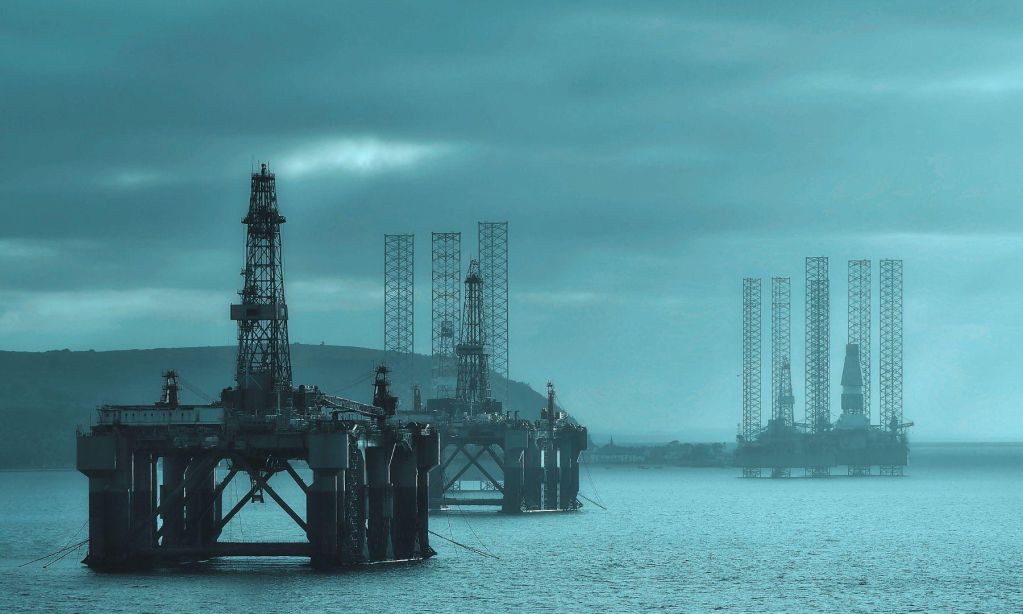In November 2022, the government of Newfoundland and Labrador passed the Future Fund Act. With the passage of that law, the province created a sovereign wealth fund, managed by the Department of Finance. Lawmakers called it the Future Fund.
Sovereign wealth funds are a common tool in the policy toolbox for resource-dependent economies, from Norway to Saudi Arabia. The goal of the Future Fund is to improve the provincial government’s finances by saving the money the government collects from natural resource revenue—as well as a portion of the revenue from the planned privatization of state assets worth over $5 million. The fund would generate income for the government from long-term savings and investment.
From the year 2000 onwards, oil and gas extraction’s share of provincial GDP has averaged 25 per cent, a figure higher than that of Alberta (21 per cent) and five times that of the national average (five per cent).
A sovereign wealth fund like the Future Fund can play an instrumental role in calming economic disruption—and it invests public savings for the long term. Newfoundland and Labrador’s economy—and the government’s budget—remain highly susceptible to volatility due to the oil price fluctuation and its oil production levels. When commodity prices decline, a sovereign wealth fund can inject funds either directly, by supplementing the government’s budget through transfers, or indirectly, by stimulating the economy via investment.
In the long-term, investing accumulated savings in sovereign wealth funds can transform a transient and depleting asset base rooted in natural resources into a permanent and enduring endowment of financial assets. sovereign wealth funds generally have long-term investment horizons, few or no set liabilities, stable capital inflows without withdrawals and no limitations on asset allocations. As a result, their investments can compound over greater periods of time and take on higher levels of risk in search for higher returns.
In addition to these two primary purposes, sovereign wealth funds also serve additional functions: they finance projects to help jurisdictions improve infrastructure and they can invest directly to diversify economies. In a 2017 report,the Conference Board of Canada ranked Newfoundland ranked last among all the comparator jurisdictions regarding economic performance and for its measure of labour productivity growth.
The oil industry in Newfoundland is relatively new—originating in 1979 when oil was first discovered offshore in the Hibernia oilfield. The first barrel of oil was produced nearly two decades later, in 1997. Oil and gas companies opened three other fields: Terra Nova in 2002, White Rose in 2005, and Hebron in 2017. Recently, the federal government approved the Bay du Nord project, the largest offshore oil project in Canadian history, with the goal of producing 200,000 barrels a day of oil and production to begin by 2027.
The province negotiated the oil royalties of Hibernia, Terra Nova and White Rose each individually. All three have complicated, multi-tiered royalty regimes with staged payout definitions and progressive allowances for rates of return. The royalty regime was reformed in 2015. Under this system, a basic royalty applies to gross revenue when a project starts producing oil, increasing from one per cent to 7.5 per cent as the project recovers its costs. Once costs have been recovered and profits start to roll in, a net royalty will be applied to net revenue, ranging from 10 percent to 50 percent — with the basic royalty becoming a credit against net royalties.
While the new Generic Offshore Royalty Regime, last promulgated in 2017, is an improvement upon the previous regime, there are problems with the existing regime. Research from prior to and after the introduction of the GORR show Newfoundland to have significantly lower royalty rates than other oil producing provinces, for instance Alberta and Saskatchewan. Another difference is how price sensitivity is built into regimes. Newfoundland’s GORR constantly increases based on cumulative gross revenue. In other words, Newfoundland’s royalty rates are constantly increasing, but this increase may occur more quickly or slowly with price changes. By comparison, in royalty regimes where there is a sliding scale directly tied to the price of oil, such as Alberta, rates can go up or down with corresponding changes in price.
In the royalty system I am proposing for the calculation of the Future Fund, there would be two royalty tiers. The rates within each tier are dependent on the price of oil. In the first tier, a project would pay a percentage of its gross revenues (minus eligible transportation costs) until capital expenditures are recovered. In the second tier, a project would pay a percentage of its net revenues (gross revenues minus operating expenditures). Each tier employs a sliding scale on the basis of price, something notably absent from the present royalty regime in Newfoundland. For the sake of simplicity, I have assumed the inflation adjusted cost of production to be $32.50 per barrel across all fields for the entire production period.
Hibernia, Terra Nova, White Rose, and Hebron are all assumed to be in the second tier, while Bay du Nord and Cappahayden would begin in the first. I assume that Bay du Nord costs around $15 billion to develop, while Cappahayden requires $10 billion. In the scenario where oil averages $60, Bay du Nord and Cappahayden would reach the second tier after six years, while at $80 the second tier is reached after five years.
This model assumes Hibernia’s oil production will remain constant between now and 2030. Beginning in 2030, I am forecasting an exponential production decline of seven per cent, up to 2045. According to Husky Energy, production at White Rose is supposed to peak in 2025 at 75,000 barrels by tapping into new wells. It assumes production remains at this level for five years before declining at a rate of five per cent per annum until 2045. Production at Terra Nova is set to resume this September—this model assumes it produces 30,000 barrels a day for the next 12 years, and that Hebron produces 135,000 barrels per day until 2025. At that point, the model assumes an exponential production decline of 12 per cent per annum up to 2030. Beginning in 2030, the production decline slows until five per cent per annum up to 2045.
The model assumes that Bay du Nord comes online in 2027, and produces 200,000 barrels per day, up until 2050. This production estimate was made prior to the additional discoveries of Harpoon, Mizzen, and Baccalieu, so in this inferred scenario, any decline in production is offset by new projects under the Bay du Nord Banner coming online, with Cappahayden being the final field to come online, this time in 2030. The model assumes production is 120,000 barrels per day, up until 2050. Similar to the Bay du Nord project, this is a scenario where any production decline is offset by any additional oil fields that go into production between now and 2050.
In this forecast, overall production increases, peaking at approximately 420,000 barrels per day in 2034, before declining until 2050, at which point oil production ceases. This forecast is more ambitious than that proposed by the Canadian Association of Petroleum Producers in 2019 and the Canada Energy Regulator in 2021, but more tempered than the proposal from the government of Newfoundland and Labrador in 2018, which foresees the province producing 650,000 barrels per day by 2030.
The model assumes the fund, on average, returns 8.8 per cent annually—the historical average annual return of a growth-orientated asset allocation strategy (70 per cent American equities and 30 per cent fixed income) which a sovereign wealth fund might select. The model also assumes that the fund will be invested for 27 years, without any withdrawals and that all earnings would be reinvested. This time horizon uses the latest International Energy Agency report, where oil demand peaks in 2035, before plateauing around 2050, at which point demand falls sharply. I am further operating under the assumption that the federal government will be paying the royalty due to the United Nations under Article 82 of the United Nations Convention on the Law of the Seas.
I have modelled four outcomes for the Future Fund. In the first, the price of Brent averages $80 and 50 per cent of oil royalties are invested in the Future Fund. In this scenario, the fund would be worth nearly $165 billion in 2050. In the second, the price of Brent averages $80 and 30 per cent of oil royalties are invested in the Future Fund. In this scenario, the fund would be worth nearly $98 billion. In the third scenario, the price of Brent averages $60 and 50 per cent of oil royalties are invested in the Future Fund. In this scenario, the fund would be worth nearly $75 billion. In the fourth scenario, the price of Brent averages $60 and 30 per cent of oil royalties are invested in the Future Fund. In this scenario, the fund would be worth nearly $45 billion.
For contrast, the province’s entire 2021-2022 budget was $9.1 billion. Assuming the budget were to increase by three per cent each year for the next 27 years, the budget would be approximately $20.2 billion. In the more optimistic scenario, where oil averages $80 and 50 per cent of oil royalties are invested, the imagined 8.8 per cent return would equate to approximately $14.5 billion, or nearly three quarters of the provincial budget. In the most pessimistic scenario, where oil averages $60 and only 30 per cent of oil royalties are invested, the imagined 8.8 per cent return would equate to approximately $4 billion, or nearly one fifth of the provincial budget. By contrast, oil royalties have averaged only one eighth of the province’s budget from 1980 to 2012.
The outcomes of these models rely on multiple assumptions which are unlikely to occur in tandem. Their true value lies in offering a glimmer at the potential long-term benefit which the Future Fund could offer the province.
If oil production continues to increase, and the province becomes truly committed to building a sovereign wealth fund through disciplined contributions and reinvestment of income, then Newfoundland and Labrador have the opportunity to experience unique long-term fiscal stability and economic growth.
Newfoundland and Labrador, through the Future Fund, has the opportunity and ability to incentivize private sector growth in areas where there has been little before.
It could fund the decarbonization of the province’s electricity sector by financing the construction of renewable energy systems—for which the fund would collect revenue when the projects are operational. It could use a small portion of the fund to incubate research and development projects—from which the fund would hold an equity stake. It could fund the construction of new hospitals, student residences, and retirement homes—from which the fund would collect rent.
It could, in short, be a motor driving economic growth and public services in the province—if legislators use the tool properly.







